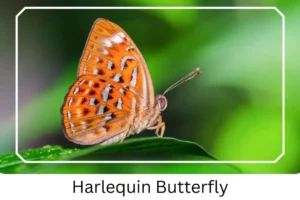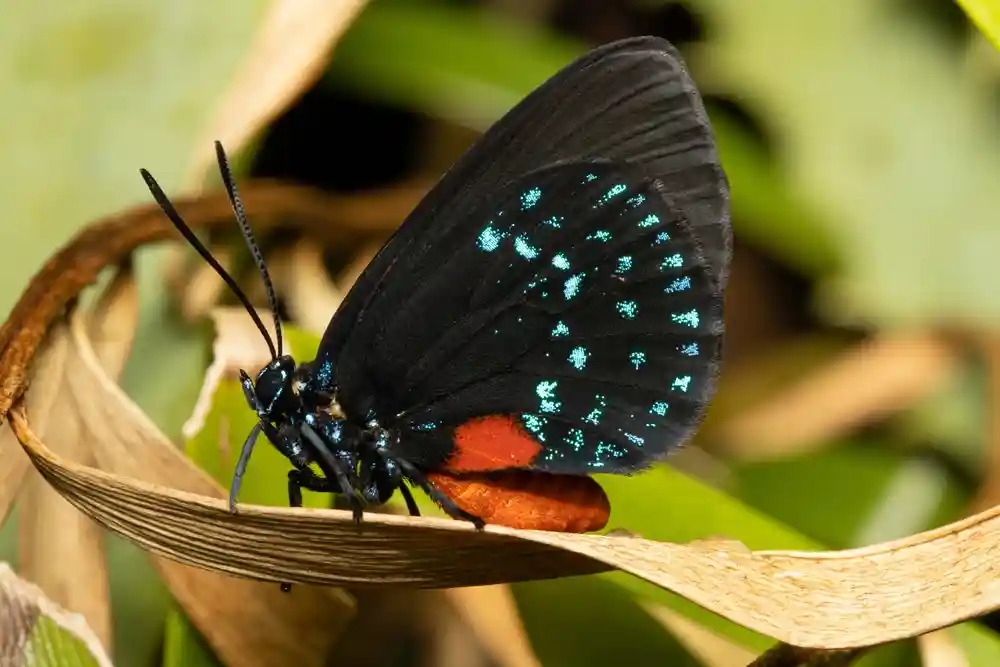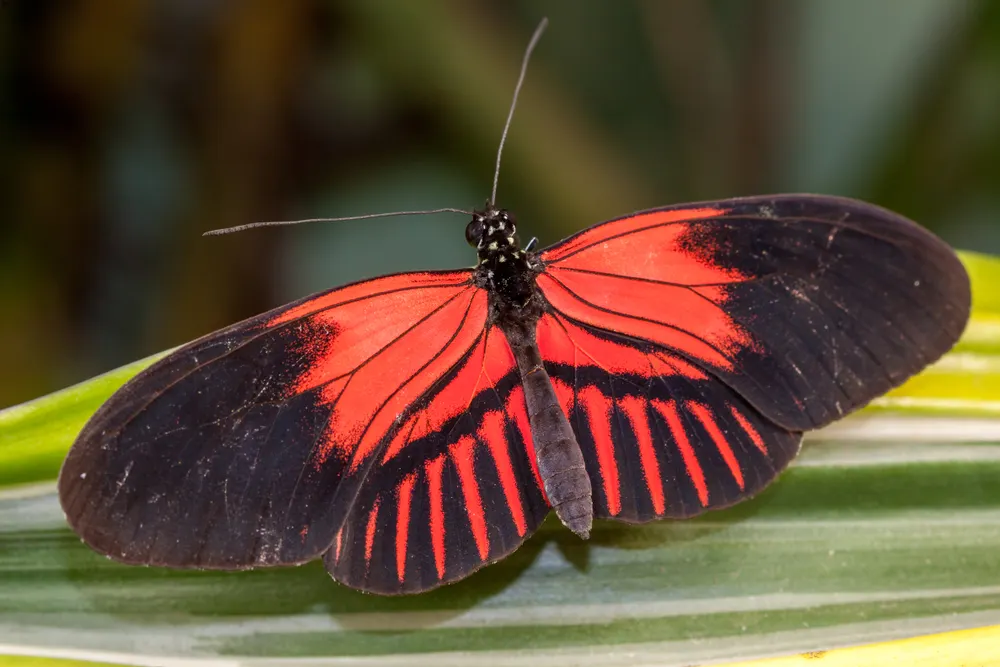Harlequin (Taxila haquinus)
The Harlequin butterfly, a symbol of vibrant beauty, flutters through the limited landscapes of the Indian subcontinent, bringing color to the shaded nooks of nature. Named after the iconic Italian costume pattern, this butterfly’s presence is a testament to the rich biodiversity of its native regions. With its preference for dimly lit environments, the Harlequin offers a glimpse into the complex interplay between species and their habitats.
Scientific Classification
- Family: Riodinidae
- Genus: Taxila
- Common names: Orange Harlequin
- Scientific Name: Taxila haquinus
Overview
Harlequin butterflies are not just any ordinary species; they embody the intricate beauty of nature through their dazzling colors and unique behaviors. Thriving in shaded areas, these butterflies navigate their environment with a grace that belies their delicate form. Their life cycle, from egg to adult, is a journey of transformation that highlights the wonder of nature’s design.
Description and Identification
Caterpillar
The journey of a Harlequin begins with its larval stage, where the caterpillar exhibits a translucent greenish-white body adorned with black patches. These larvae are further distinguished by pairs of fine, hair-like growths in shades of gray, white, and black, signaling the beginning of their metamorphosis.
Pupa
As the caterpillar matures, it transitions into the pupa stage, encasing itself in a bright green chrysalis. This chrysalis is marked by patches and light purple marks in its early stages, before eventually darkening to black or dark gray as it nears adulthood.
Adult Butterfly
Upon reaching maturity, the Harlequin butterfly reveals the full extent of its beauty.
Sexual Dimorphism: The difference between males and females is unmistakable, with each displaying distinct color patterns that contribute to their identification.
Color and Appearance: Males are characterized by their dark brown wings, contrasted by the pale reddish-brown hues of the forewings’ sub-apical region. Females, on the other hand, boast a reddish-brown base color, adorned with black spots and a distinctive white sub-apical band. In their resting state, both sexes reveal a reddish-brown underside sprinkled with metallic white and black spots, the females showcasing a more pronounced white patch on the forewing.
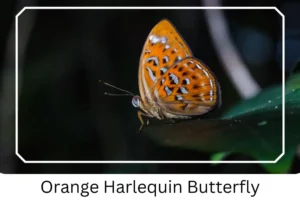
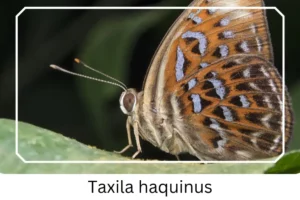 Average Wingspan: The Harlequin’s wingspan averages at 45 mm (1.77 in), a testament to its delicate yet robust build.
Average Wingspan: The Harlequin’s wingspan averages at 45 mm (1.77 in), a testament to its delicate yet robust build.
Flight Pattern: These butterflies exhibit a fast flight pattern, typically maintaining a low to medium altitude, which underscores their lively presence in their natural habitat.
Eggs
The reproductive cycle of the Harlequin is initiated by the laying of pale, translucent yellow eggs. These conical eggs are deposited singly on the leaves of the host plant, marking the beginning of a new generation.
Quick Facts | |
| Distribution | From the eastern parts of India to Palawan, and southern regions of Java. |
| Habitat | Prefers shaded areas in forests, fields, gardens, and grasslands. |
| Lifespan of Adults | Two to three weeks. |
| Host Plants | Utilizes Passion flower species such as Passiflora oerstedii and Passiflora menispermifolia in Central America, among other varieties in different regions. |
| Adult Diet | Feeds on flower nectar, pollen, and ripe or rotting fruits. |
How to Identify Harlequin Butterfly?
Identifying Harlequin butterflies in their natural habitat is a delightful challenge for enthusiasts and researchers alike. These creatures are distinguished by their small size and the bright, contrasting colors of their wings. When observing in the wild, look for butterflies with a fast, fluttery flight pattern and a preference for shaded areas. The male Harlequins can be recognized by their dark brown and pale reddish-brown wings, while the females display a reddish-brown base with black spots and a distinct white sub-apical band. Additionally, the unique presence of metallic white spots on the underside of their wings when closed is a key identifier.
Did You Know?
- The Harlequin butterfly is the sole species within its genus, Taxila, making it a unique representative of its lineage.
- The name “Taxila” is derived from the ancient Taxila University in eastern India, highlighting the butterfly’s historical and cultural significance.
- These butterflies play a crucial role in pollination, contributing to the health of their ecosystems by facilitating the reproduction of a variety of plant species.
Conclusion
The Harlequin butterfly, with its vibrant colors and dynamic life cycle, stands as a symbol of nature’s endless capacity for wonder. Through understanding and appreciating these creatures, we gain insight into the delicate balance of ecosystems and the importance of conservation efforts to preserve such irreplaceable beauty.
Harlequin Butterfly Pictures

Scientific Classification

- Family: Riodinidae
- Genus: Taxila
- Common names: Orange Harlequin
- Scientific Name: Taxila haquinus

